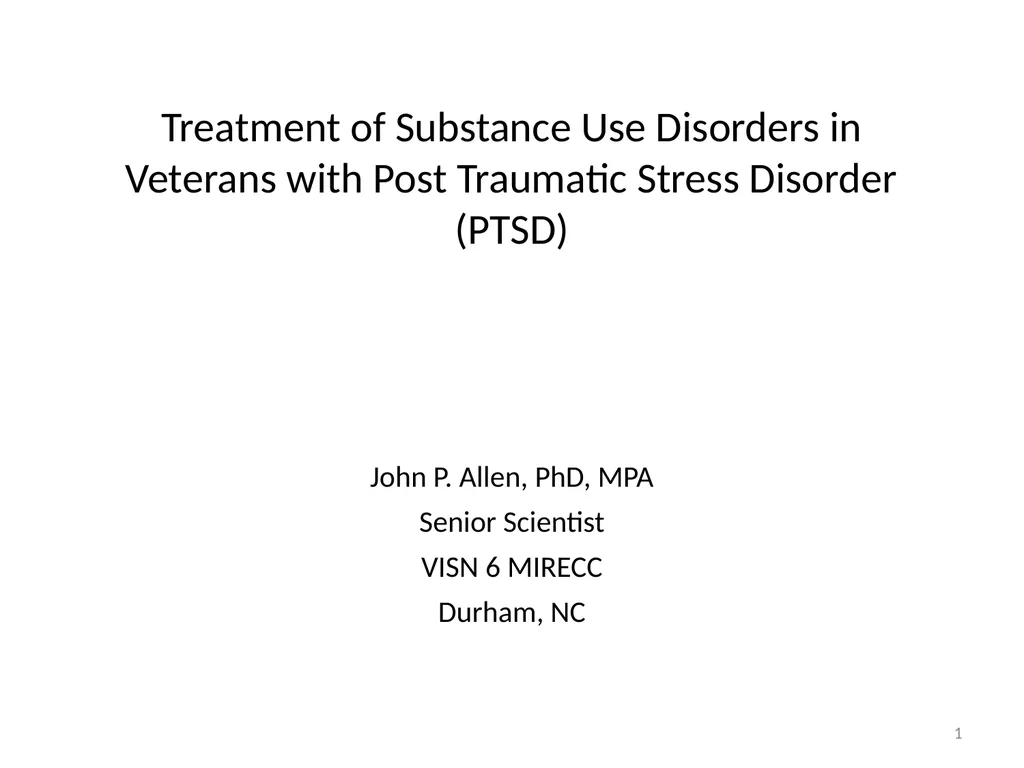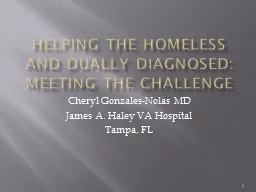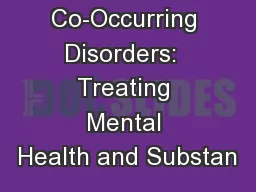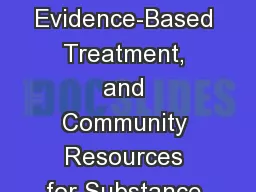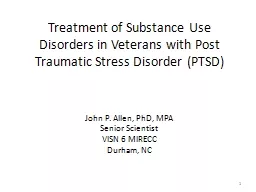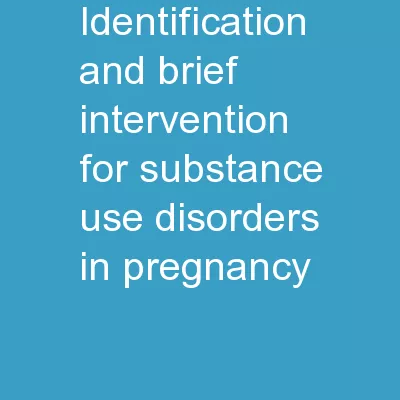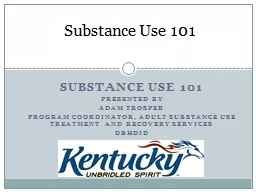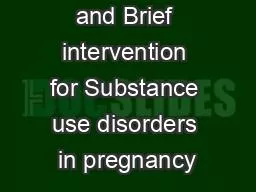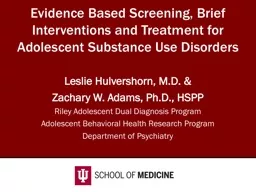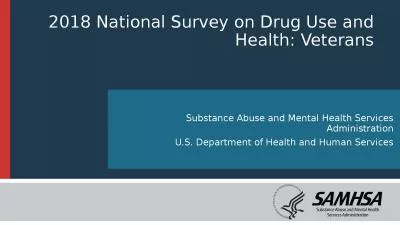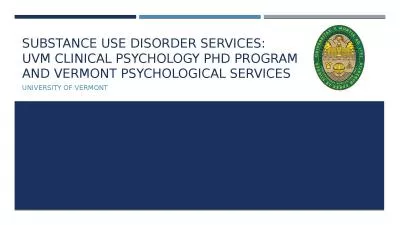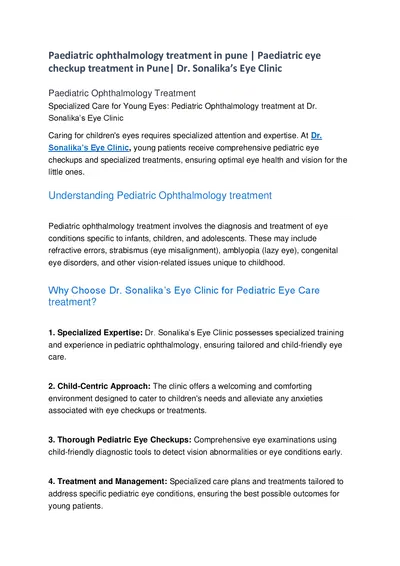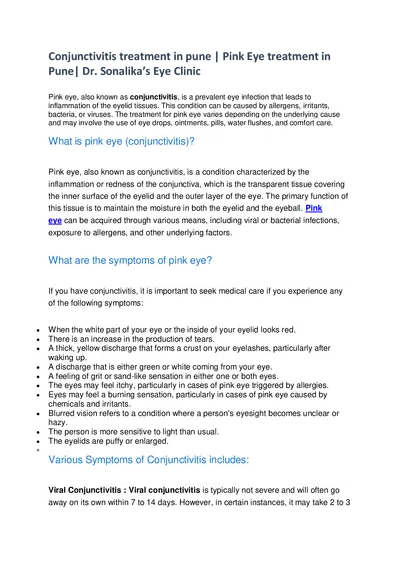Treatment of Substance Use Disorders in Veterans
Author : natalia-silvester | Published Date : 2025-08-04
Description: Treatment of Substance Use Disorders in Veterans with Post Traumatic Stress Disorder PTSD John P Allen PhD MPA Senior Scientist VISN 6 MIRECC Durham NC 1 Outline of the Presentation Context of the Issue Warzone Stressors Substance Use
Presentation Embed Code
Download Presentation
Download
Presentation The PPT/PDF document
"Treatment of Substance Use Disorders in Veterans" is the property of its rightful owner.
Permission is granted to download and print the materials on this website for personal, non-commercial use only,
and to display it on your personal computer provided you do not modify the materials and that you retain all
copyright notices contained in the materials. By downloading content from our website, you accept the terms of
this agreement.
Transcript:Treatment of Substance Use Disorders in Veterans:
Treatment of Substance Use Disorders in Veterans with Post Traumatic Stress Disorder (PTSD) John P. Allen, PhD, MPA Senior Scientist VISN 6 MIRECC Durham, NC 1 Outline of the Presentation Context of the Issue Warzone Stressors Substance Use Disorder and PTSD in Service Members and Veterans Treatment Considerations VA Services for OEF/OIF Veterans Military Culture 2 Scope of the Issue As of April 6, 2012 http://www.defenselink.mil/news/casualty.pdf 3 Influx of OEF/OIF Veterans 1.9 million have served so far in OEF/OIF 800,000 OEF/OIF Veterans are now VA Eligible 300,000 OEF/OIF Veterans have enrolled Former Active Duty Former Reserves/NG 96% of OEF/OIF Veterans have been seen in outpatient care 4 Mental Health Issues Among OEF/OIF Veterans Approximately half of OEF/OIF/OND Veterans receiving VA care have provisional mental health diagnoses. The most common of these are PTSD, affective disorders, neurotic disorders, nondependent abuse of drugs or alcohol, and alcohol dependence. Mental Health Problems in OEF/OIF Veterans 38% of Soldiers and 31% of Marines report psychological symptoms. Among the National Guard, the figure rises to 49%. Psychological concerns are significantly higher among those with repeated deployments. Psychological concerns among family members of deployed and returning OEF/OIF/OND Veterans are also of concern. Hundreds of thousands of children have experienced deployment of a parent. 6 Warzone Stressors 7 “In war, there are no unwounded soldiers.” --Jose Narosky 8 Understanding the Experience of OEF/OIF/OND 9 There’s nothing normal about war. There’s nothing normal about seeing people losing their limbs, seeing your best friend die. There’s nothing normal about that, and that will never become normal…” Lt. Col. Paul Pasquina, MD from the movie "Fighting For Life" 10 Traumatic Events in OEF/OIF Service Members (1) Multi-casualty incidents (suicide bombers, IEDs (improvised explosive devices), ambushes) Seeing the aftermath of battle Handling human remains Friendly fire Witnessing or being involved in situations of excessive violence 11 Traumatic Events in OEF/OIF/OND Service Members (2) Witnessing death/injury of close friend/favored leader Witnessing death/injury of women and children Feeling helpless to defend or counter-attack Being unable to protect/save another service member or leader Killing at close range Killing civilians and avoidable casualties or deaths 12 Exposure to traumatic warzone events (Hoge et al., 2004) 13 “The most complex and dangerous conflicts, the most harrowing operations, and the most deadly wars, occur in the head.” (Anthony Swafford, Jarhead from PBS video Operation Homecoming) Introduction 14 Events that provoke terror, horror, or helplessness Death or injury
